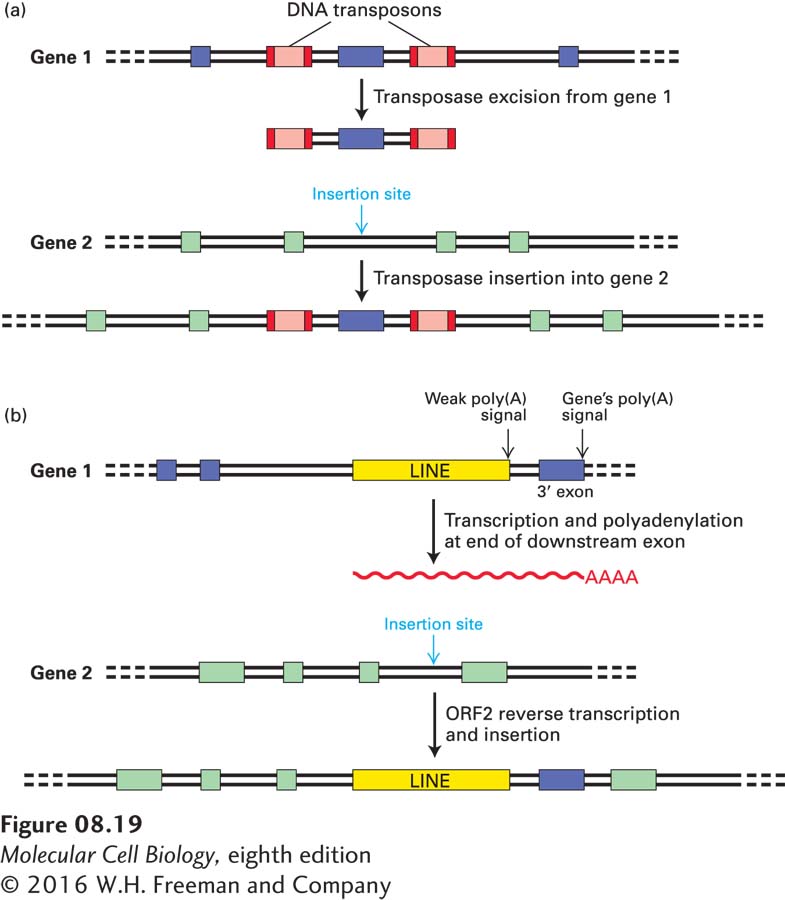
FIGURE 8- 19 Exon shuffling by transposition. (a) Transposition of an exon flanked by homologous DNA transposons into an intron on a second gene. As we saw in Figure 8- 10 , step 1, transposase can recognize and cleave the DNA at the ends of the transposon inverted repeats. In gene 1, if the transposase cleaves at the left end of the transposon on the left and at the right end of the transposon on the right, it can transpose all the intervening DNA, including the exon from gene 1, to a new site in an intron of gene 2. The net result is an insertion of the exon from gene 1 into gene 2. (b) Integration of an exon into another gene via LINE transposition. Some LINEs have weak poly(A) signals. If such a LINE is in the 3′-most intron of gene 1, during transposition its transcription may continue beyond its own poly(A) signals and extend into the 3′ exon, transcribing the cleavage and polyadenylation signals of gene 1 itself. This RNA can then be reverse- transcribed and integrated by the LINE ORF2 protein (see Figure 8- 17 ) into an intron on gene 2, introducing a new 3′ exon (from gene 1) into gene 2.
[Leave] [Close]